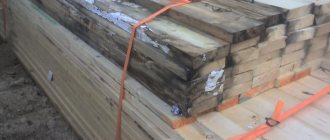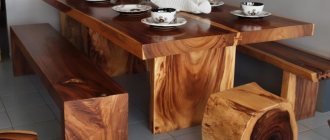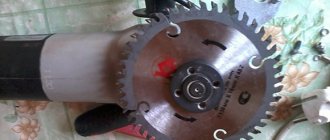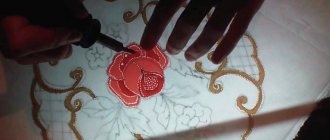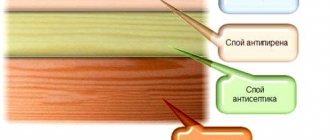Strong and durable wood is recognized by experts as the safest material for humans and the environment. The degree of environmental friendliness can be safely assessed as the highest, which significantly expands the final areas of application of natural raw materials. For their work, specialists use cutters to join wood, resulting in original and durable products.
Description
Wood processing technology takes a lot of time and effort from craftsmen. At the first stage, the raw materials are thoroughly dried, sawn into blanks and coated with a special composition. All work is carried out at large enterprises that are equipped with the necessary equipment. When the wood has gone through all stages of preparation, boards and other materials are made from it.
All blanks are sent to factories, where professionals use them to produce not only construction products, but also various furniture. During work, wood parts of different shapes and sizes can be used, which is why splicing and gluing simply cannot be done without. The first method is relevant for workpieces of the same size and shape. But splicing can be carried out along the length, width, and also thickness. Pre-prepared ends may have special tenons and grooves. Due to this, the strength of the connection between different parts is significantly increased.
How to set the cutter
For proper operation, you need to carefully adjust the vertical reach of the cutter above the table and the position of the guide ruler. The essence of the adjustment is that you need to determine the point of symmetry of the cutter profile and place it above the table at a height equal to half the thickness of the workpiece and at the same distance from the rip fence. The point of symmetry is located at the intersection of the generatrix of the cone of the cutting edge of the cutter and the zigzag diagonal.
Theoretically and under ideal conditions, the distance A = B is equal to half the thickness of the board being processed. In practice, A and B can be made a quarter of a millimeter less than the thickness of the workpiece. For what? To create some kind of base surface on the workpieces during the run, which will not wrinkle when pressed by the milling machine. This is especially noticeable when the workpiece leaves the working area of the cutter.
Everything is clear in theory, now it’s a matter of practice. To set the cutter, you can use one of two methods (there are other options). They are relatively simple and do not require special skills or tools, although if you have them, it won’t be any worse.
Method one
The method from the author of the HeARTWood YouTube channel Mikhail is simple. You will need thick cardboard or thin plastic, a sharpened pencil (a scriber or a knife for plastic). The essence of the method is that the location of the blanks is marked on a rectangle of cardboard. When they intersect, a square is formed. The diagonals of this square intersect and form the desired point of symmetry. Next, the cutting edge of the cutter is aligned with the diagonal of the square on the cardboard, and the parallel stop is aligned along the edge of the cardboard rectangle.
The whole process is perfectly described in the video:
For accurate marking you need to remember:
- The pencil line also has a thickness, do not forget to take it into account (it will be more accurate to mark with a knife or scriber)
- the geometry of the bars is not ideal even after surface thicknessing, especially take a closer look at the angles between the face and the end
- Do not neglect test runs on scraps, you will regret less about damaged material
Method two
The method was suggested by the respected Naeel. He advises measuring and calculating the basic dimensions of the cutter and making the installation based on them. The zigzag angle is selected as a “control point” and all measurements are taken from it. The cutter should be positioned so that this point coincides with the middle of the board, located both horizontally and vertically. The control point is located from the central point at a distance of A/2 vertically and B/2 horizontally.
The position of the control point is C + A/2 from the table plane and C + B/2 from the stop. C - half the thickness of the board. We measure the distances to the table and the stop with a caliper or depth gauge from the zigzag angle.
A more detailed description of this method is at the link.
Characteristic
Today there are several types of wood cutters, but all models differ in the general principle of their structure. Manufacturers provided the presence of a working part and a shank, and also installed a cutting edge. For the manufacture of important components, high-alloy steel is used, which boasts increased strength. For both the disc and straight models, the shape of the cutter pattern is always as precise as possible. Only high-quality equipment with minimal impact can be used for sharpening. Only in this case can the performance characteristics of the tool be improved.
Milling cutter design and workpiece dimensions
The cutter has a conical shape with an angle of 45 degrees. An additional tongue-and-groove element is added to the inclined profile of the cutting edge - a “zigzag”, which has symmetry relative to a certain point - the center of symmetry. In theory, this point is the base point when setting up a router for running workpieces.
When using a cutter, it is assumed that the parts being processed have the same thickness (this is not a prerequisite: how to work with parts of different sizes, read at the end of the article) and a certain range of possible working sizes.
The minimum size of workpieces that can be processed with such cutters is determined by the dimensions of the “zigzag”: width and height. In the figure above, the minimum size is indicated as h. We add a few millimeters per side to the height of the “zigzag” and thus obtain the minimum thickness of the workpiece. The closer the thickness of the parts is to the zigzag dimensions, the higher the likelihood of wood destruction during processing, assembly or gluing.
The maximum workpiece size is assumed to be equal to the working height of the cutter minus a few tenths of a millimeter. In the figure above, the maximum size is indicated as H. For example, for the Enkor 10613 cutter, the maximum thickness of the workpiece can reach up to 29.5-29.7 mm, since its nominal working height is 30 mm.
We will tell you how to work with workpieces thicker than the working height of the cutter when gluing corner joints at the end of the article.
Varieties
Experts distinguish two main categories of cutters for wood splicing: end cutters and attachment cutters. The diameter of their shank can be 8, 12 and 32 millimeters. Attachment models are used for a spindle with a diameter of 3.2 centimeters. Such products are considered classic for stationary equipment. End mills for joining wood are actively used by professionals.
According to the type of construction, products can be solid, welded, prefabricated, or even brazed. Depending on the tasks, the units are ring, disk, end and cylindrical. Mills for longitudinal merging of wood can be used on horizontal, engraving, vertical equipment, as well as on multifunctional CNC machines.
Nomenclature
TAF-Pro cutters | Quality HS-HP/l=spike length | |||||||||||||||||||||||||||||||||||||||||||||||||||||||||||||||||||||||||||||||||||||||
t= slope F= tenon length | ||||||||||||||||||||||||||||||||||||||||||||||||||||||||||||||||||||||||||||||||||||||||
TAF-C cutters | Quality HS-HP/l=spike length | |||||||||||||||||||||||||||||||||||||||||||||||||||||||||||||||||||||
| ||||||||||||||||||||||||||||||||||||||||||||||||||||||||||||||||||||||
Knives TAF-C | Quality HS-HP/l=spike length | |||||||||||||||||||||||||||||||||||||||||||||||
t= slope F= tenon length | ||||||||||||||||||||||||||||||||||||||||||||||||
Technological process
For several years now, professionals have been actively using cutters to join wood lengthwise. The first machines appeared more than three centuries ago. Today, a router is an indispensable device for high-quality processing of natural wood workpieces. Wood joining cutters allow you to implement the following ideas:
- Create holes in the material. Arrangement of grooves and folds, without which it is simply impossible to produce high-quality parts of different shapes.
- Cutting tenons of different sizes, with the help of which individual fragments are glued together.
High-quality milling machines are widespread not only in the household industry, but also in large enterprises. The ease and simplicity of manufacturing various wooden blanks for subsequent gluing can be rated 4 points. In order for the result to meet all expectations, you must first acquire the necessary experience.
Gluing wood at home
Wood gluing may sometimes be required at home. This often happens when wooden furniture sets are put up or due to various breakdowns. Before gluing, the surfaces of wooden products must be properly prepared.
To do this, their pores are cleaned of old glue and paint layers, degreased with a solvent, and dried. After applying glue to both parts, they are carefully connected and clamped in a clamp for at least 30 minutes.
Commonly used adhesives include:
- Casein glue.
- Waterproof seams are provided by synthetic wood glue.
- Strong bonding is obtained when using glue “Dubok”, “Ago”, “Mekol”, “Mars”.
In order to achieve high strength of the parts to be glued, it is necessary to strictly follow the instructions included with each type of glue.
You can clearly see how wood is glued together in the video:
Care
Absolutely all types of wood cutters require proper maintenance conditions. Specialists should promptly check the degree of sharpening, as well as the absence of chips and cracks. After working with the tool, it is cleaned of resins, dust and other debris. The machines must be stored in a specially designated place. If the master knows that he will not use the unit for a long time, then all components must be lubricated with standard machine oil.
To sharpen high-speed steel, it is better to use grinding bars or special machines. If the selected nozzle has plates made of carbide material, then all manipulations should be performed exclusively with specialized devices. Only flat areas of the working surface of the cutters can be processed.
Working teeth
All wood cutters sold today can be divided into different categories. The design of the products can be prefabricated or one-piece. If a tool can boast of its compactness, manufacturers can make it one-piece, which is also very convenient. This nuance does not significantly affect the cost of the unit. Larger models may have a soft core and a fairly durable edge.
A prefabricated wood cutter has a significant advantage, since the user can always choose the most suitable diameter for the size required for the workpiece. If the product is worn out, then you can quickly replace the problem area with new cutters. Experts identify only two effective ways of sharpening teeth: pointed and backed. The last option is more popular. During sharpening, the height of the teeth does not change at all, which cannot be said about pointed models.
Based on the level of hardness, experts distinguish a group of cutters of the A series (for professional use), as well as category N. The latter option is more suitable for home use. Of course, powerful professional units are quite expensive, but with their help you can turn your wildest ideas into reality. Products from the A series compare favorably with all analogues in their durability and functionality. For everyday tasks, an affordable option is quite enough. If you properly care for the purchased router, it will certainly serve for many years without causing the user hassle with repair work.
